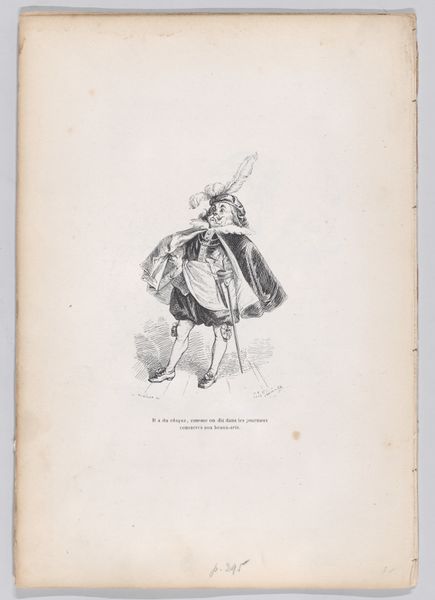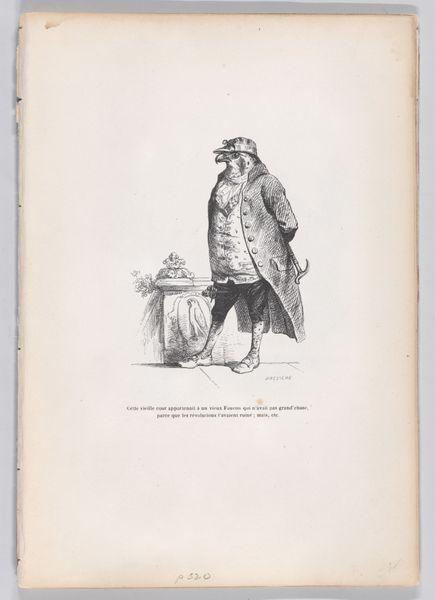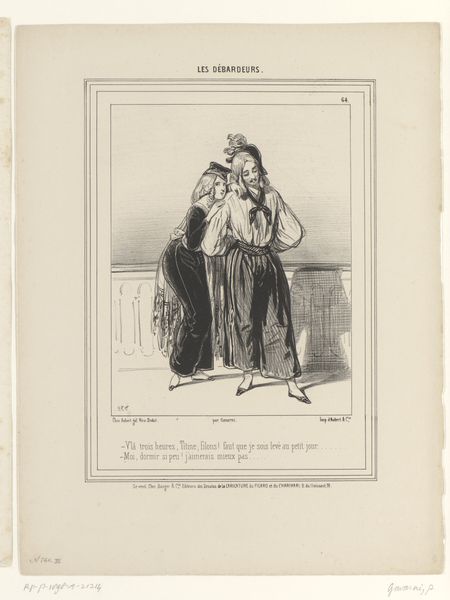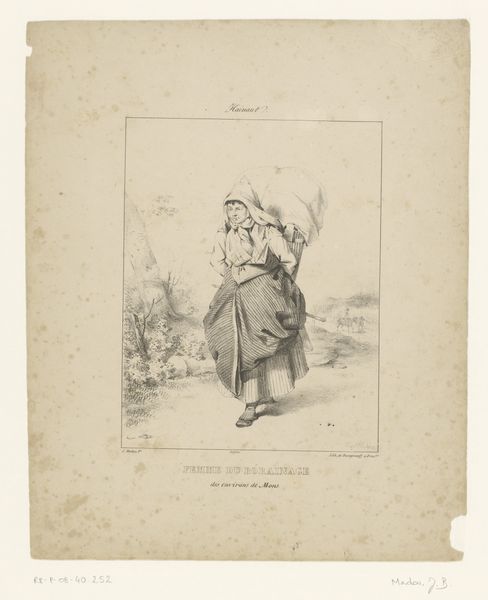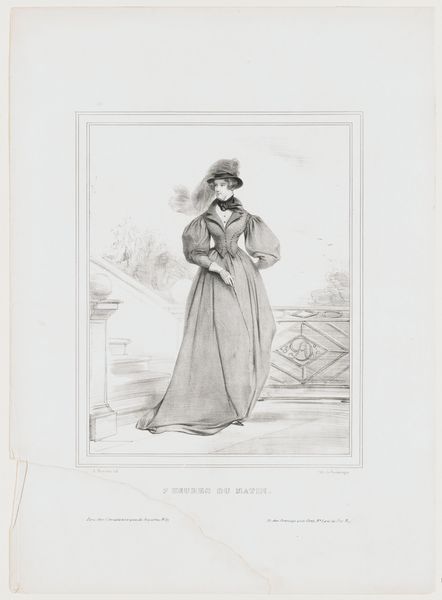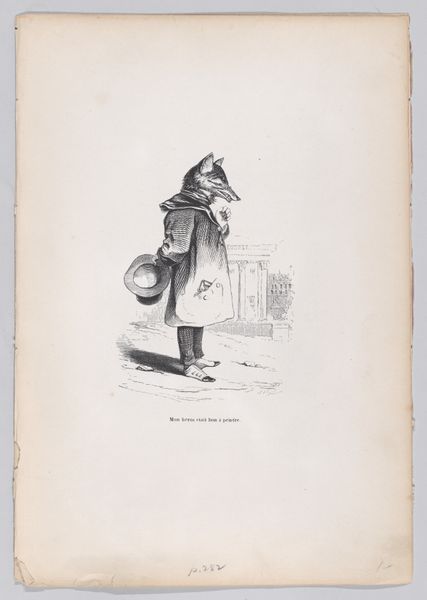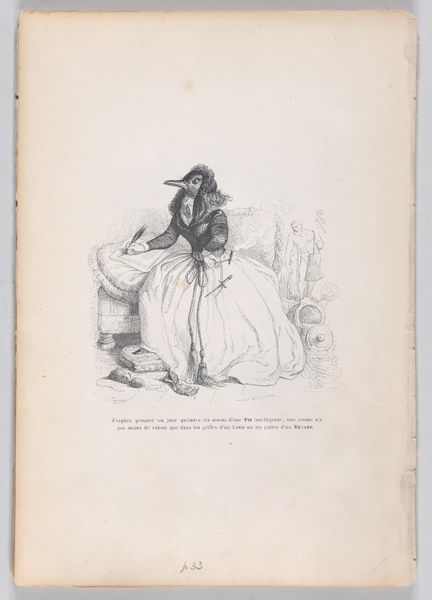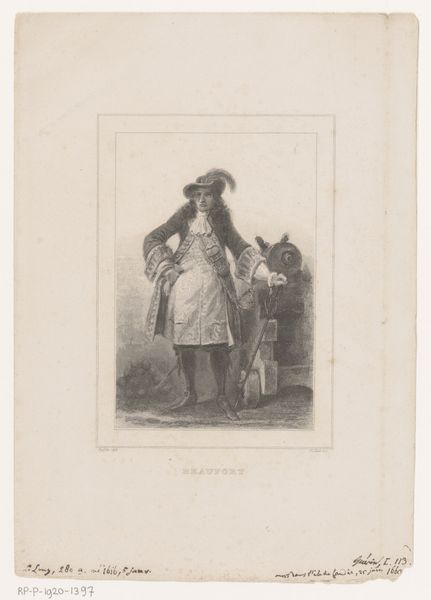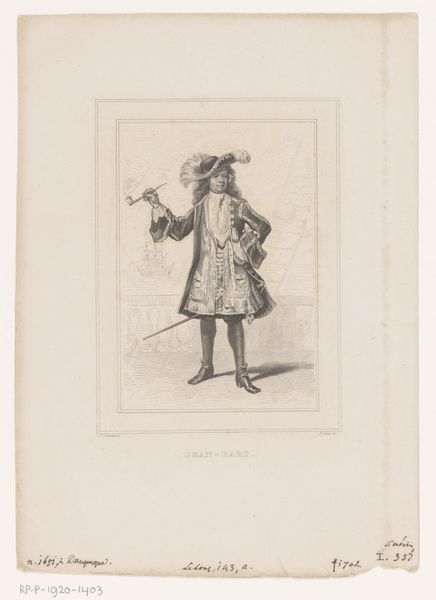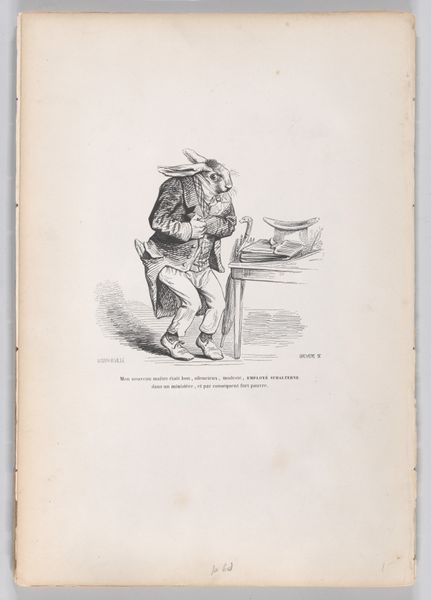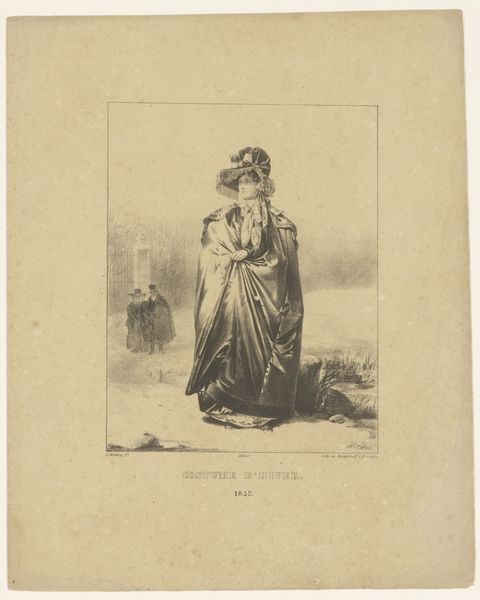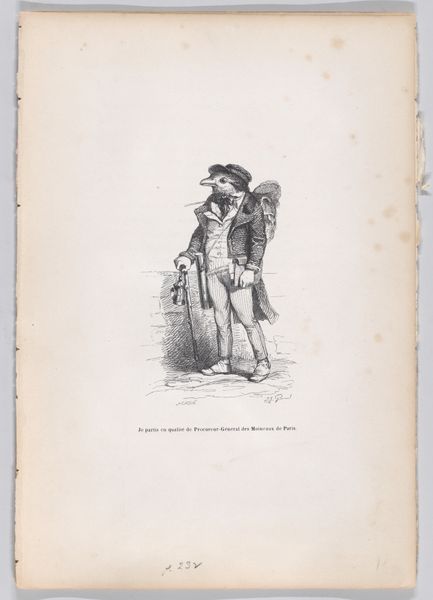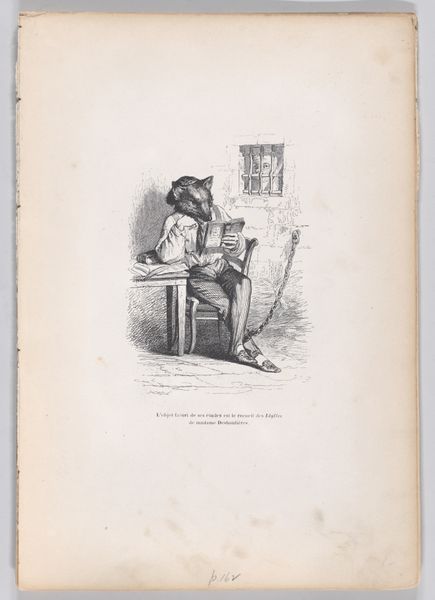
"My captor was one of the king's lackeys" from Scenes from the Private and Public Life of Animals 1832 - 1852
0:00
0:00
drawing, print, engraving
#
drawing
# print
#
caricature
#
romanticism
#
genre-painting
#
engraving
Dimensions: Sheet: 10 5/16 × 7 3/16 in. (26.2 × 18.3 cm)
Copyright: Public Domain
Editor: Okay, next up is "My captor was one of the king's lackeys" by J.J. Grandville, created sometime between 1832 and 1852. It's an engraving, and the first thing that strikes me is the rather strange image of an animal dressed in courtly attire. It has this unsettling, almost satirical quality. What do you make of it? Curator: Well, considering this work comes from "Scenes from the Private and Public Life of Animals," it demands we consider the manufacturing and the subsequent consumption of these types of images. Engravings, especially in this period, were reproducible and meant for wide distribution. What power dynamic do you see playing out between the artist, the depicted subject—the anthropomorphized animal—and the consumer of this image? Editor: Hmm, that’s interesting. I hadn’t considered the consumption aspect. The animal, forced into human clothes, it’s all about the artist's power to manipulate. Do you think the mass production cheapens any message it’s trying to make? Curator: Not necessarily. Instead, I suggest it *amplifies* it. Think about the material reality: these prints were affordable, circulated widely, and fueled a visual culture that satirized the social and political elites of the time. The material and process speaks directly to production methods, critiquing through representation the exploitation that defines those class structures. Look closely at the lines; what do they suggest about the labour involved? Editor: The cross-hatching looks very detailed but uniform, maybe even regimented... hinting at the repetitive, potentially monotonous work involved in creating prints like this? That changes the perspective quite a bit. Curator: Precisely. Consider Grandville's choice to use a readily accessible medium to spread these political critiques. He utilizes mass-production to undermine the very elites who might have patronized traditional art forms. So, the value isn't just in the image itself, but the means of getting it into the hands of the public. Editor: So it’s about subverting the established order using its own tools? It almost makes me rethink what is considered traditional art. Curator: Exactly. It reveals how materials, labor, and consumption all work together to construct meaning. Editor: Wow, I never would have considered all that! This artwork definitely highlights the importance of looking beyond the surface image. Curator: And it demonstrates how artistic choices, tied to the means of production, contribute to social commentary.
Comments
No comments
Be the first to comment and join the conversation on the ultimate creative platform.
